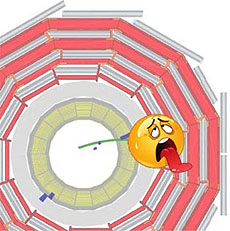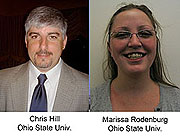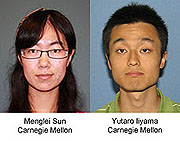Crazy particles
 |
| Scientists in the CMS collaboration look for many different possible signatures that would reveal new physical phenomena. One interesting idea is massive and long-lived particles that stop inside the detector and then decay. |
"We are all agreed that your theory is crazy. The question that divides us is whether it is crazy enough to have a chance of being correct."
This quote is attributed to Niels Bohr speaking to Wolfgang Pauli when the latter was presenting a new theory in a seminar, but it works equally well when modern scientists make presentations about new theories to try to push forward our understanding of the cosmos. While there is no question that the Standard Model has been an enormous success, there remain unsolved mysteries. The early successes of the LHC have stringently constrained theoretical ideas that have been put forward as possible advances in our understanding of the rules of the universe. This leads scientists to think more creatively.
One such crazy idea (but is it crazy enough?) is that there exist very heavy and stable particles that can be created only in large accelerators like the LHC. Unlike most subatomic particles, which decay in less than the blink of an eye, these particles could persist for long times, ranging from microseconds to years.
A number of theories make these predictions, and one originates in supersymmetry. All supersymmetric theories predict that there exists a set of particles that we've not yet discovered, although the different theories make quite different predictions as to the masses of these undiscovered particles.
An example of a supersymmetric theory that predicts long-lived particles is one in which the bosons have a very high mass, while the fermions have a very low mass. One of these fermions is the gluino, which is the supersymmetric analog of the gluon, a boson in the Standard Model.
There are some requirements on the decay product of the gluino. Since the gluino carries color (the charge of the strong force) it must decay into a particle that also carries color. In the Standard Model, this would be a quark. And since the gluino is a supersymmetric particle, it must also have a supersymmetric decay particle. But since its supersymmetric partner would be massive, as all supersymmetric bosons are, the gluino cannot easily decay. The net result is that, under these conditions, the gluino could live for quite a long time.
If such a particle exists and can be produced at the LHC, some of them will be produced with such a low velocity that they will interact with the CMS detector and stop moving, much as a ball rolling over a beach eventually stops. And, once stopped, the particle will eventually decay inside the detector. To be able to better identify these decays, scientists looked inside the detector in periods when no beam passed through it. Using the data, they were able to search for and set limits on long-lived particles with lifetimes ranging from a millionth of a second to more than fifteen minutes.
So we're left with the question: The theory is crazy, but is it crazy enough? Hopefully with the resumption of LHC operations later this year, we'll finally find out.
—Don Lincoln
 |
| These U.S. scientists contributed to this analysis. |
 |
| These physicists have made crucial contributions to the data quality monitoring for the CMS electromagnetic calorimeter. |
|